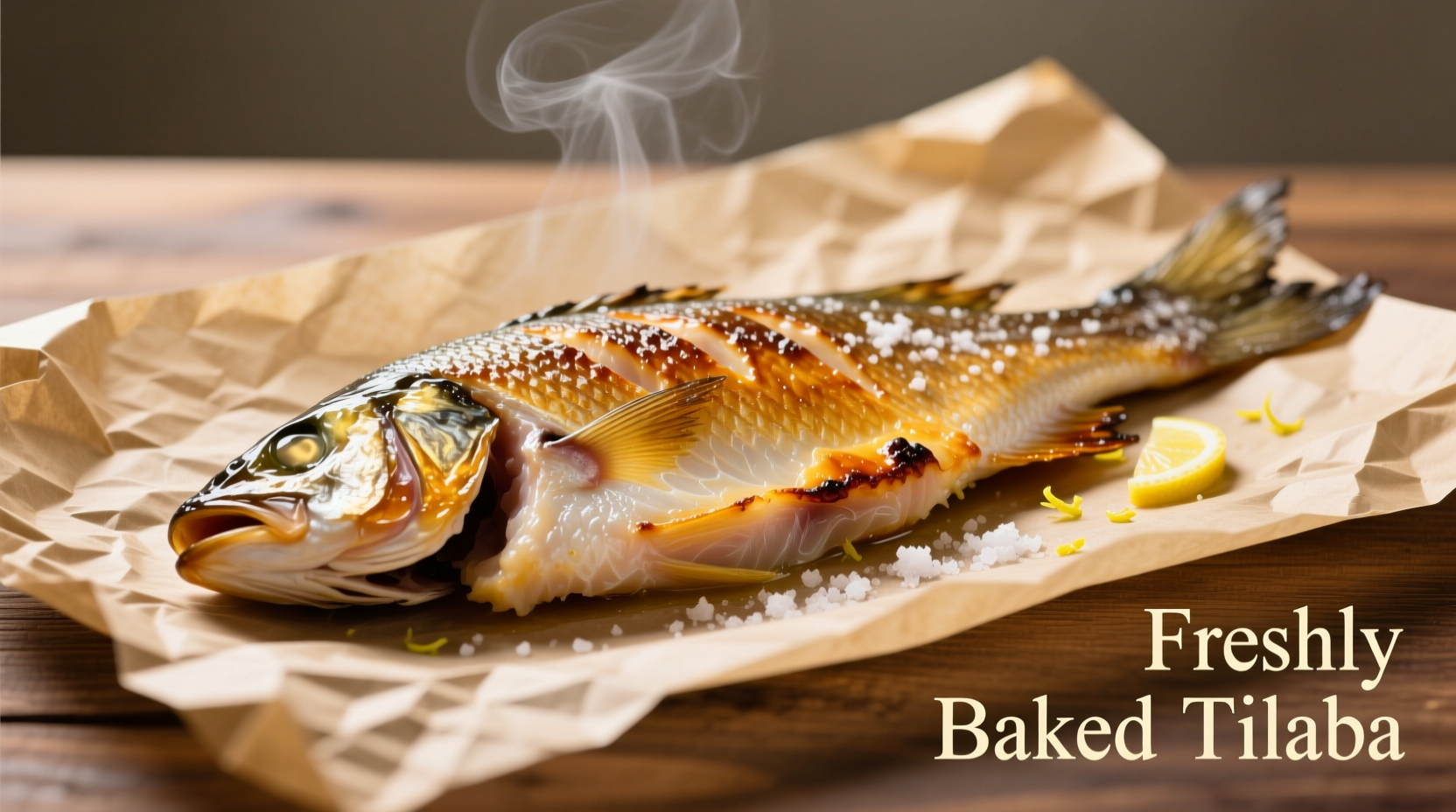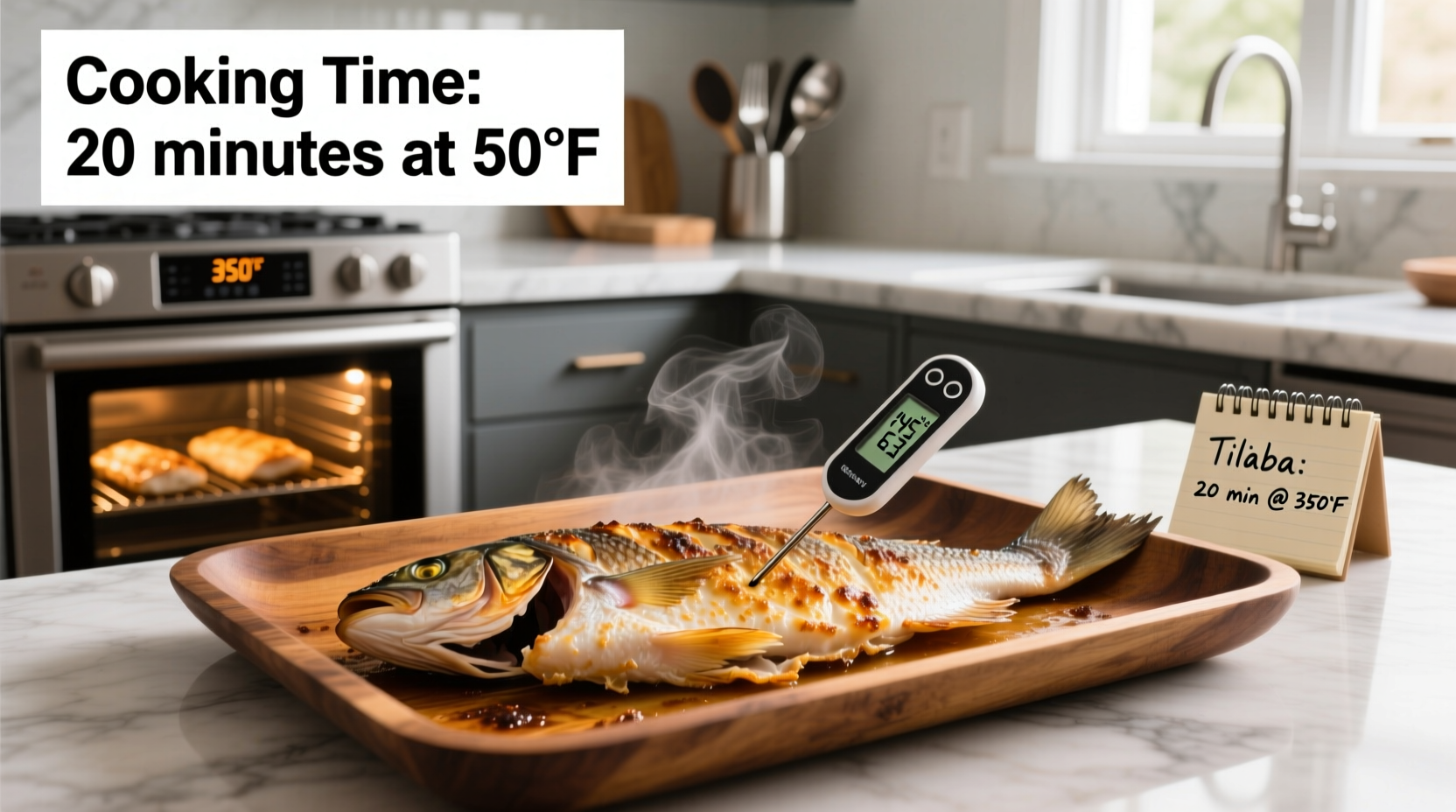Getting the cooking time right for tilapia makes all the difference between a moist, flaky fillet and dry, overcooked fish. This lean white fish cooks quickly and can go from perfect to ruined in minutes. Whether you're a beginner cook or just need a reliable reference, this guide delivers precise timing, professional techniques, and science-backed doneness indicators so you can consistently prepare delicious baked tilapia.
Why Precise Timing Matters for Tilapia
Tilapia's delicate texture requires careful attention to cooking time. Unlike heartier fish like salmon, tilapia contains minimal fat, making it prone to drying out when overcooked. The USDA's Food Safety and Inspection Service confirms that fish should reach 145°F internal temperature for safe consumption, but many home cooks don't realize that carryover cooking continues to raise the temperature after removal from the oven.
| Fillet Thickness | Recommended Time at 350°F | Visual Doneness Indicator |
|---|---|---|
| 1/2 inch (standard) | 12-15 minutes | Opaque throughout, flakes with light pressure |
| 3/4 inch (thicker cut) | 15-18 minutes | Complete opacity, separates easily into large flakes |
| 1/4 inch (thin cut) | 8-10 minutes | Translucent center disappears, slight resistance when flaked |
Step-by-Step Baking Process
Preparation Essentials
Before you even preheat your oven, proper preparation ensures even cooking. Pat fillets completely dry with paper towels - moisture creates steam that prevents proper browning. Season both sides with salt 15 minutes before cooking to help form a light crust. According to the FDA's Fish and Shellfish Safety guidelines, bringing fish to room temperature for 10-15 minutes before cooking promotes more even heat distribution.
Oven Temperature Verification
Don't trust your oven's dial - use an independent oven thermometer. A study by America's Test Kitchen found that home ovens can vary by as much as 50°F from the set temperature, dramatically affecting cooking times. Position racks in the center of the oven for optimal heat circulation, and avoid opening the oven door during the first two-thirds of cooking time to maintain consistent temperature.
The Critical Final Minutes
Set a timer for 10 minutes, then begin checking for doneness. Insert an instant-read thermometer into the thickest part of the fillet. When it reaches 140°F, remove from oven - the residual heat will carry it to the safe 145°F mark. The USDA's Food Safety Education emphasizes that fish continues cooking after removal from heat, so pulling it slightly early prevents overcooking.

Avoid These Common Tilapia Mistakes
Even with perfect timing, these errors can ruin your results:
- Overcrowding the pan - Space fillets at least 1 inch apart to allow proper air circulation
- Using acidic marinades too long - Citrus or vinegar can start to "cook" the fish, making it mushy
- Skipping the resting period - Let fish rest 3-5 minutes after baking for juices to redistribute
- Relying solely on time - Always verify with thermometer as oven variations affect results
Proven Doneness Indicators Beyond Timing
Time is just a guideline - these visual and tactile cues confirm perfect doneness:
- Color change - Translucent pink or gray becomes uniform white or off-white
- Flaking test - Gently press with fork; properly cooked fish separates into large, moist flakes
- Texture - Firm but yielding to pressure, not rubbery or mushy
- Internal temperature - 145°F measured in thickest part with instant-read thermometer
Serving Suggestions for Perfect Results
Complement your perfectly cooked tilapia with these professional pairing tips. Lemon-dill sauce enhances the mild flavor without overpowering it, while roasted vegetables provide complementary textures. For best presentation, serve immediately after the resting period while the fish remains hot but has retained its moisture. Remember that CDC food safety guidelines recommend serving cooked fish within two hours to maintain food safety standards.











 浙公网安备
33010002000092号
浙公网安备
33010002000092号 浙B2-20120091-4
浙B2-20120091-4